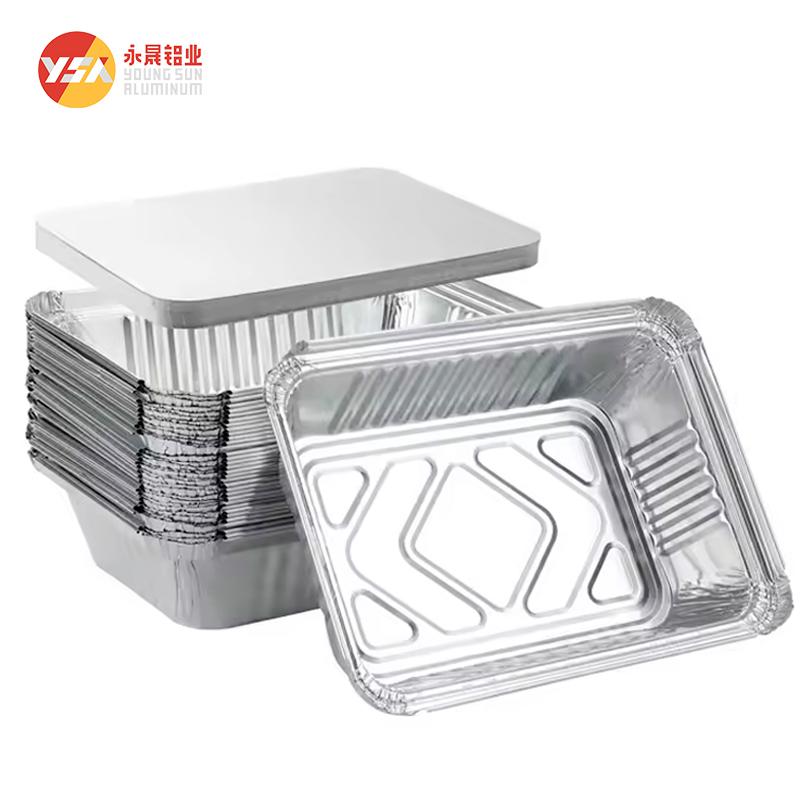1. Introduction to Foil Containers
1.1 Definition of Foil Containers
Foil containers are lightweight, flexible, and durable vessels made primarily from aluminum. They are designed for an array of applications, from food storage to cooking. Their innate properties make them ideal for both domestic and commercial use.
1.2 Brief History of Foil Containers
The inception of foil containers dates back to the early 20th century, when aluminum began to emerge as a popular packaging material. Over the decades, advancements in manufacturing processes have led to the wide variety of foil containers available today.
2. The Role of Foil Container Manufacturers
2.1 Overview of Manufacturing Processes
Foil container manufacturers employ a series of intricate processes to transform raw aluminum into finished products. This involves cutting, shaping, and sometimes coating the aluminum to enhance its usability.
2.2 Importance in the Packaging Industry
These manufacturers play a pivotal role in the packaging industry, providing solutions that cater to the growing demand for convenient and sustainable food storage options. Their products support both individual consumers and large-scale food service operations.
3. Types of Foil Containers
3.1 Standard Foil Containers
Standard foil containers are ubiquitous in kitchens and restaurants. They are often used for baking, roasting, and reheating, providing a practical solution for a myriad of culinary tasks.
3.2 Specialized Foil Containers
3.2.1 Baking Containers
Baking containers are designed specifically to withstand high temperatures, making them ideal for cakes, casseroles, and other baked goods.
3.2.2 Takeaway Containers
These containers are engineered for takeaway meals, offering convenience for consumers on the go. Their design allows for easy sealing and transport.
3.2.3 Meal Prep Containers
Meal prep containers have gained popularity among health-conscious individuals. They are designed for portion control, making it easier to prepare and store healthy meals in advance.
4. Materials Used in Foil Container Production
4.1 Aluminum Alloys
Aluminum alloys are the primary material used in foil container manufacturing. These alloys are chosen for their lightweight nature and exceptional resistance to corrosion.
4.2 Coatings and Treatments
To enhance the performance of foil containers, manufacturers often apply coatings that improve non-stick properties and resistance to grease. These treatments are crucial for maintaining the quality of the food contained within.
5. Manufacturing Techniques
5.1 Die-Cutting
Die-cutting is a fundamental process in foil container manufacturing. It allows for precise shaping of the aluminum, creating the desired form and dimensions.
5.2 Forming Processes
Various forming techniques, including stamping and pressing, are employed to mold the aluminum into the final container shape. These processes ensure consistency and quality across batches.
5.3 Printing and Branding
Many manufacturers offer custom printing services, allowing businesses to brand their containers. This adds a professional touch and enhances product visibility.
6. Quality Control in Foil Container Manufacturing
6.1 Standards and Certifications
Quality control is paramount in foil container manufacturing. Manufacturers must adhere to strict industry standards and obtain certifications that guarantee the safety and reliability of their products.
6.2 Common Quality Tests
Regular testing for strength, heat resistance, and leak-proof capabilities ensures that foil containers meet consumer expectations and regulatory requirements.
7. Environmental Impact of Foil Containers
7.1 Sustainability Considerations
As environmental concerns grow, manufacturers are increasingly focused on sustainable practices. This includes sourcing recyclable materials and minimizing waste during production.
7.2 Recycling and Reusability
Aluminum is highly recyclable, making foil containers a more sustainable option compared to plastic. Many manufacturers promote the recyclability of their products, encouraging consumers to dispose of them responsibly.
8. Innovations in Foil Container Manufacturing
8.1 Technological Advancements
Recent technological advancements have revolutionized the manufacturing process, leading to more efficient production methods and higher quality products.
8.2 Future Trends
The future of foil container manufacturing looks promising, with trends leaning towards eco-friendly materials and smarter packaging solutions that cater to the evolving needs of consumers.
9. Choosing the Right Manufacturer
9.1 Factors to Consider
When selecting a foil container manufacturer, factors such as product range, quality assurance practices, and sustainability initiatives should be prioritized.
9.2 Questions to Ask Potential Manufacturers
Engaging with potential manufacturers through targeted questions can help determine their capability to meet specific needs. Inquire about their certifications, production capacities, and customization options.
10. Conclusion
10.1 Summarizing the Importance of Foil Container Manufacturers
Foil container manufacturers are essential players in the packaging landscape, providing versatile solutions that meet the demands of modern consumers and businesses alike.
10.2 Final Thoughts on the Future of Foil Containers
As the industry evolves, the focus on sustainability and innovation will continue to shape the future of foil containers, ensuring they remain a staple in kitchens and restaurants around the world.



